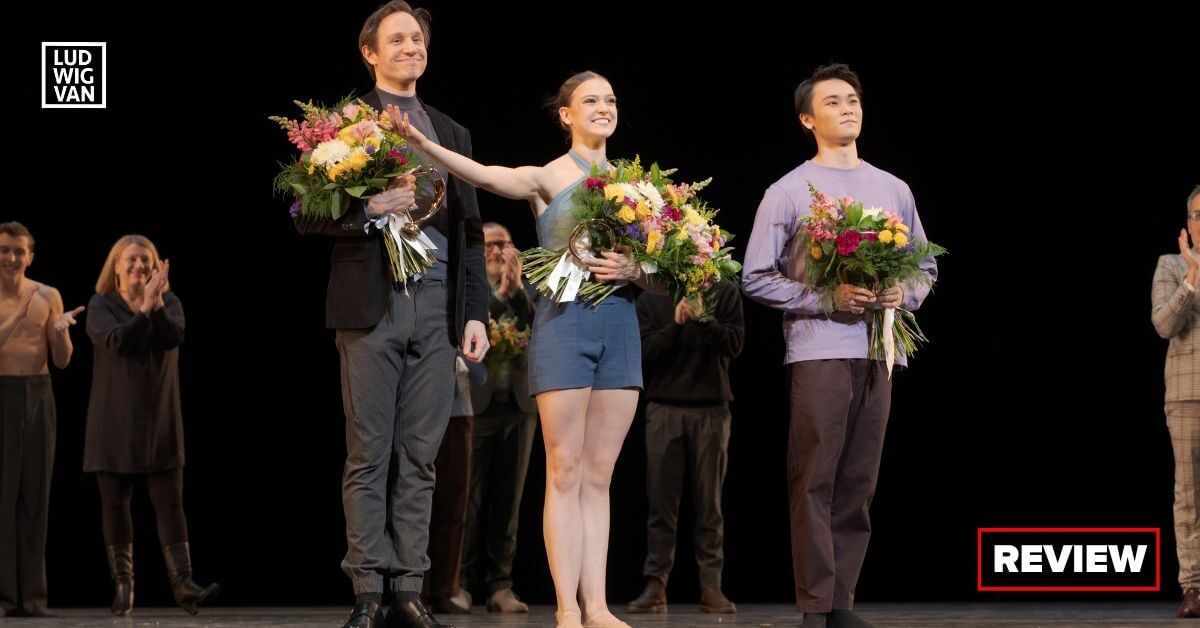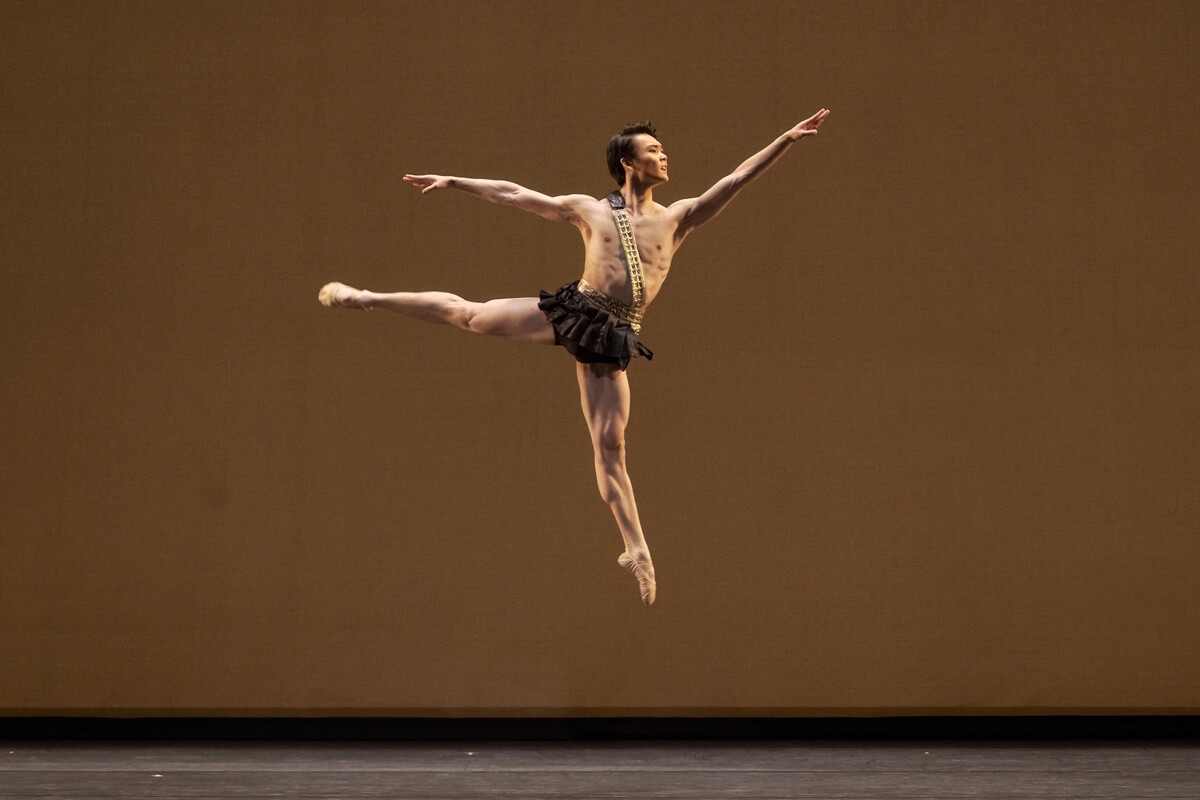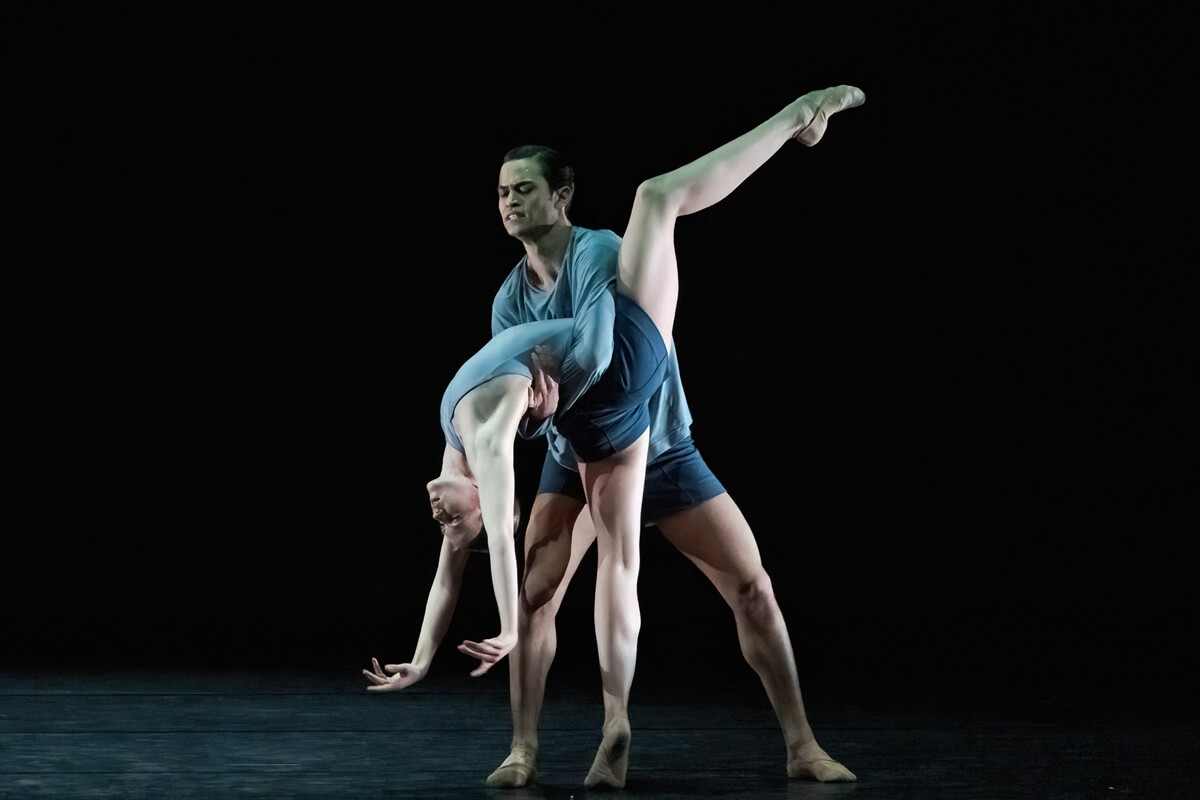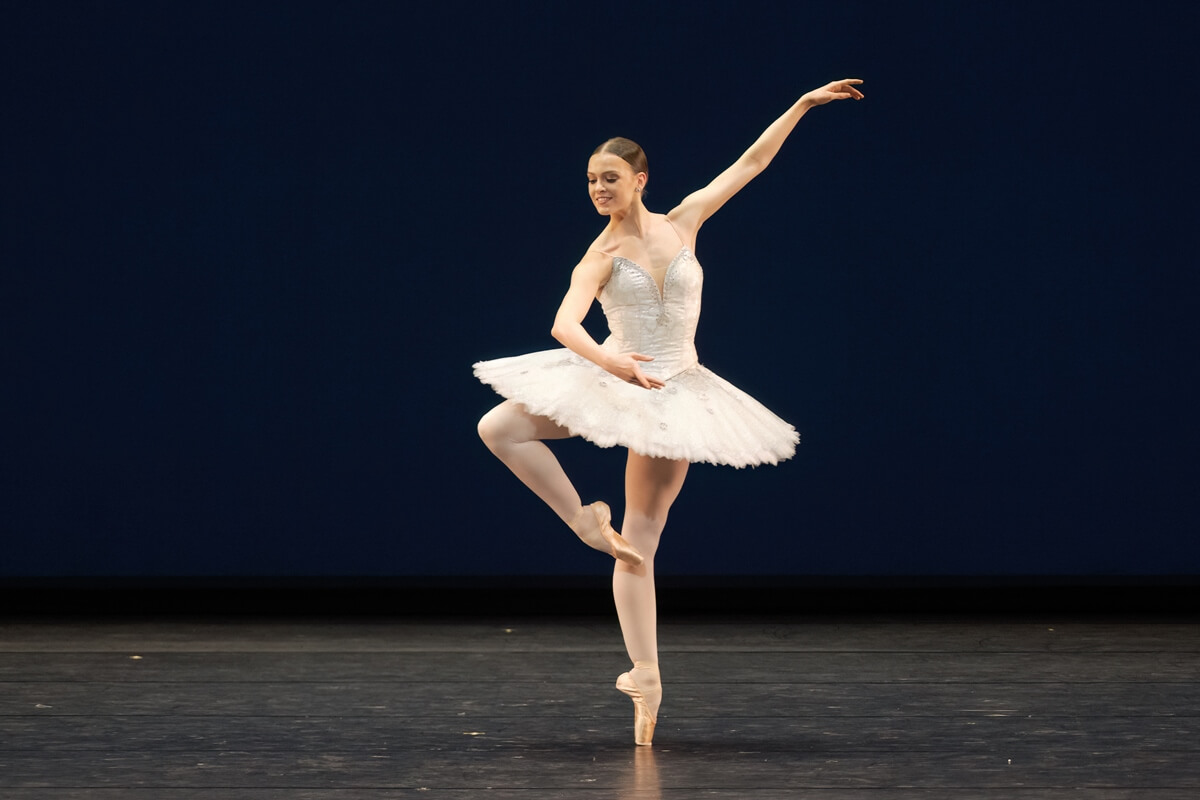
The National Ballet of Canada/International Competition for the Erik Bruhn Prize, Four Seasons Centre, Mar. 25, 2023.
This always exciting evening last came our way in 2019, and I’m glad to report that this latest edition was right on the mark for thrills and chills.
Danish-born Erik Bruhn, the late, great former National Ballet artistic director, and one of the greatest dancers who ever lived, established the prize in his estate. The object is to celebrate the artistic and technical merits of a young male and female dancer between the ages of 18 and 23, who perform a classical and contemporary pas de deux. In 2009, a choreographic award was added to the mix for the contemporary performance.
The competition is administered by the National, and the judges are the company artistic directors. They can’t vote for their own team, and rank the dancers by preference without any discussion. In fact, they only find out who won when the winners are announced on stage at the end of the evening.
The first Bruhn Prize was in 1988, with the competition occurring every three or four years. The competitors come from the four companies with which Bruhn was the most closely associated — Royal Danish Ballet, Royal Ballet, American Ballet Theatre, and National Ballet of Canada. In the event that one company chooses not to participate, another company is invited. For the 2023 competition, Stuttgart Ballet replaced the Royal Danish.
Former National principal dancer, now principal coach, Rex Harrington, hosted the evening in a charming, easy fashion. He was a good choice.
So how did I do in my predictions? For this competition, I got two out of three right — the male winner (Daichi Ikarashi, Royal Ballet), and the choreographer (Roman Novitzky, Stuttgart) — but in retrospect, I understand how I missed the female winner (Mackenzie Brown, Stuttgart).
Here are my impressions on how the competition unfolded. The performance order was chosen by lot.

Classical Repertoire
First up was American Ballet Theatre with Tristan Brosnan and Chloe Misseldine, both 21, performing Grand Pas Classique, choreographed by Victor Gsovsky.
Sadly, Brosnan stumbled twice on two landings, so clearly, he was out of competition, and subsequently, it was hard to get a sense of his technical prowess. Misseldine was a delicate flower, performing intricate footwork with absolute precision. The young woman could clearly stand on one toe for hours. She was a contender.
Stuttgart was next, performing the very same pas de deux as ABT. I love when that happens because you have two to compare within the competition. For reasons unknown, the scheduled young dancer, Gabriel Figueredo, did not compete, so Mackenzie Brown, 20, was partnered by Brazilian-born Stuttgart principal dancer, Adhonay Soares da Silva, who was not part of the competition. Thus, this year, there were seven competitors over all, and not the usual eight.
It was clear that Brown had attack, drama and expression, and a consistent, if not a knock-out-your-eyes technique. I remarked to my guest at the time that some of the judges might like her compelling stage presence, and that statement proved to be prophetic.
The National Ballet’s Emerson Dayton, 22, and Noah Parets, 23, performed the Act III pas de deux from Sleeping Beauty, choreographed by Rudolf Nureyev after Petipa.
For me, Dayton was blancmange. She clearly felt the music, and the technique was there, but she didn’t register any stage presence. Parets pulled off all the tricks, but needed some punch in the delivery department. He was a very good partner.
Last up was the Royal Ballet, with Daichi Ikarashi, 21, and Viola Pantuso, 20, performing the Diana and Acteon Pas de Deux, choreography after Agrippina Vaganova.
In this duet, the male dancer first appears in a giant leap from the wings, and everyone gasped at Ikarashi’s elevation, including me. The rest of his performance showed brilliant, controlled technique with Mt. Everest jumps and turns. He was breathtaking.
I am partial to ballerinas with long legs and long arms, which Pantuso used to perfection, although she was not as consistent in her tricks, where every repeat should look the same. Nonetheless, she gave an athletic performance that I found delightful.
So, coming out of the classical repertoire, ABT’s Misseldine, followed by the Royal’s Pantuso were leading the pack. As for the male leader, at that point, the Royal’s Ikarashi had won the Bruhn Prize and the other men could pack up their bags and go home. It didn’t matter how he performed in the contemporary repertoire. The guy is going to be a superstar.

Contemporary Repertoire
ABT performed American-born Lauren Lovette’s Game On, featuring a romantic couple who twist and turn their bodies around each other as they challenge each other. There was some quirky partnering, and the two performed well, although Misseldine was still a delicate flower who perhaps needed more oomph. Brosnan redeemed himself with a strong performance, both physically and emotionally.
It seems that every time Stuttgart has participated in the Erik Bruhn, they have won the choreographic prize, and this year was no exception with Slovakian-born Roman Novitzky’s A Dialog. It was impressive from the get go. This piece, showing a couple in crisis, utilized very part of the dancers’ bodies, and Novitzky’s original physicality made the dancers look sensational. Brown was terrific in her execution.
The National featured the home team in Toronto-born Ethan Colangelo’s fractured, and it was a very interesting piece in terms of the dynamics between the dancers, who seemed to be caught up in their own misery. Only from time to time were they aware of each other. This work was deep in symbolism and metaphor, but needed to go further. It felt truncated. Parets was really into the tortured movement, but Dayton, although she looked good, failed to find projection. Clearly there is talent here. She just has to find presence.
I’m sure like me, everyone was waiting to see how Ikarashi would do in the contemporary piece, but Dutch-born Joshua Junker’s Things left unsaid was minimal choreography at best. The movement seemed to stand still, and did nothing for the dancers. As a result, it was difficult to get any sense of their contemporary chops, but the dancers were strong and controlled in the little that we saw.
So, coming off the contemporary repertoire, I had ABT’s Misseldine ahead, although I wasn’t going to be surprised if the Royal’s Pantuso took the prize. Ikarashi had clearly won the men’s top spot.
Even though I saw that Misseldine didn’t really show a different side of herself in the contemporary piece, that she was all technique with no change of personality, I still thought her classical prowess would overshadow this fact. On the other hand, I should also have figured that the sensational performance of Stuttgart’s Brown in the contemporary piece, coupled with her dynamic presence in the Grand Pas Classique, would propel her to the top.
Sometimes I have been surprised by the judges’ decisions, even angry at their choices at other Erik Bruhn competitions, but not so much this time at Brown’s win. Like I say, in retrospect, I understand it.

Erik Bruhn Prize 2023 Factoids
Six of the seven competitors were born in the United States, with only Japanese-born Ikarashi being the outlier. Thus dancers are going far and wide for career choices, and companies are becoming more and more international.
Harrington changed his suits three times, saying that if Cher could put on different outfits at the Oscars, so could he. His first iteration was bright red.
Once again, conductor David Briskin showed what a great ballet conductor he is by tailoring the music to the needs of the dancers. In most competitions, the competitors perform to tape or piano, but with the Erik Bruhn prize, these young artists get a full ballet orchestra.
The Toronto audience might be partial to the National as the home team, but they always support talent, and it’s wonderful to see them give huge applause and cheers when they witness terrific dancing. It’s tremendous support for the come-from-away dancers.
This is the first Erik Bruhn Prize that has been livestreamed to Canada and the world, directed by Lina Beaudin of Nordest Studio. Apparently it was a freebee, and only available during the livestream. What a smart thing for the National to do — getting the name of the company out there, as well as publicity for the competition. Apparently, over 8,000 people watched the livestream, which is tremendous news.
While the final votes were being tabulated, the audience was shown excerpts from Lennart Pasborg’s 2000 Erik Bruhn documentary, I’m the Same, Only More. The quality, at this point, is pretty grainy, so the company needs a plan B. The usefulness of this doc is over.
In the good old days, the National used to perform a 20-minute piece. They should go back to that format, or find something else to fill the gap. After a few competitions suffering through bad pictures and bad sound, the format needs to change.
#LUDWIGVAN
Get the daily arts news straight to your inbox.
Sign up for the Ludwig van Daily — classical music and opera in five minutes or less HERE.
- INTERVIEW | Actor Diego Matamoros Takes On Icon Walt Disney In Soulpepper Production Of Hnath Play - April 16, 2024
- SCRUTINY | Opera In Concert Shine A Light On Verdi’s Seldom Heard La Battaglia Di Legnano - April 9, 2024
- SCRUTINY | Lepage & Côté’s Hamlet Dazzles With Dance And Stagecraft Without Saying Anything New - April 5, 2024



